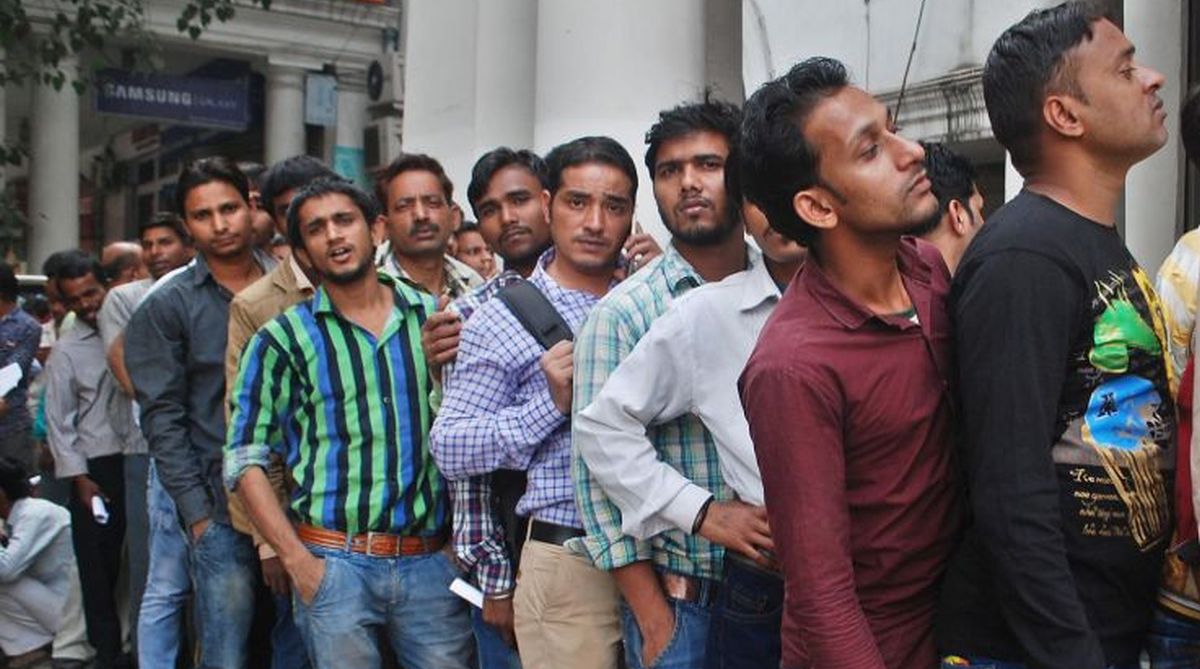The Eastern path~I
India's Act East policy was launched in 2014. As pointed out by Prime Minister Modi, it rests on four pillars: Culture, Commerce, Connectivity and Capacity.
“The increase in unemployment is clearly visible all across India, but is particularly severe in the northern states.”

Representational image (Photo: SNS)
India’s structural transformation has been slower than desired resulting in a situation where there has been an absolute decline in employment post-2013, with the rate of unemployment among the youth now at 16 per cent, says a report by one of the country’s noted private universities released on Tuesday.
The State of Working India (SWI) report by the Centre for Sustainable Employment at Azim Premji University in Bengaluru said there is an urgent need to think comprehensively about employment and for the government to formulate a focused National Employment Policy.
“Even as GDP growth rates have risen, the relationship between growth and employment generation has become weaker over time. Growth creates fewer jobs than it used to. A 10 per cent increase in GDP now results in less than 1 per cent increase in employment,” the SWI report said.
Advertisement
“Between 2013 and 2015, total employment actually shrank by seven million. More recent data from private sources show that the absolute decline has continued past 2015,” it said.
“A recent study claims, to the contrary, that the economy generated 13 million new jobs in 2017. Unfortunately, this optimistic conclusion depends on selective use of data and unjustified assumptions. As a result, the rate of unemployment among the youth and higher educated has reached 16 per cent.”
India’s new payroll data prepared by the Employees Provident Fund Organisation (EPFO) shows that around 9.5 lakh jobs were created in the formal sector in July, as against the requirement of more than a million joining the workforce each month.
India’s problem has traditionally been known as not one of unemployment but underemployment and low wages, according to the report.
“But a new feature of the economy is a high rate of open unemployment, which is now over 5 per cent overall, and a much higher 16 per cent for youth and the higher educated,” it said.
“The increase in unemployment is clearly visible all across India, but is particularly severe in the northern states.”
According to SWI, adjusted for inflation, wage rates have grown in most sectors at 3 per cent per annum or more.
“But 82 per cent of male and 92 per cent of female workers earn less than Rs 10,000 a month,” it said.
In this regard, the minimum salary recommended by the Seventh Central Pay Commission (CPC) is Rs 18,000 per month.
“Even in the organised manufacturing sector 90 per cent of the industries pay wages below the CPC minimum. The situation is worse in the unorganised sector,” the report said.
Last but not least, gender disparities are still high but are reducing in some cases, according to the SWI.
Women are 16 per cent of all service sector workers but 60 per cent of domestic workers, while overall women earn 65 per cent of men’s earnings.
“The Indian economy remains heavily gender segregated. Occupationally, women are under-represented among senior officers, legislators and managers. The situation has worsened with the proportion falling from 13 per cent in 2011 to 7 per cent in 2015,” the report said.
The ratio of male to female labour force participation rate varies from less than 0.2 in Uttar Pradesh and Punjab to 0.5 in Tamil Nadu as well as Andhra Pradesh, and to above 0.7 in Mizoram and Nagaland, it added.
According to Ajit Ghose of the Institute for Human Development, recent unemployment in India has been higher than in the past and is characterised by larger numbers of women withdrawing from the workforce.
“Labour force growth has been decelerating, characterised by a decline in employment generation, mainly because women’s participation in the workforce has been falling,” Ghose said.
“The right kind of jobs are not being created, while it is mostly women who have been withdrawing from agriculture,” he added.
Advertisement